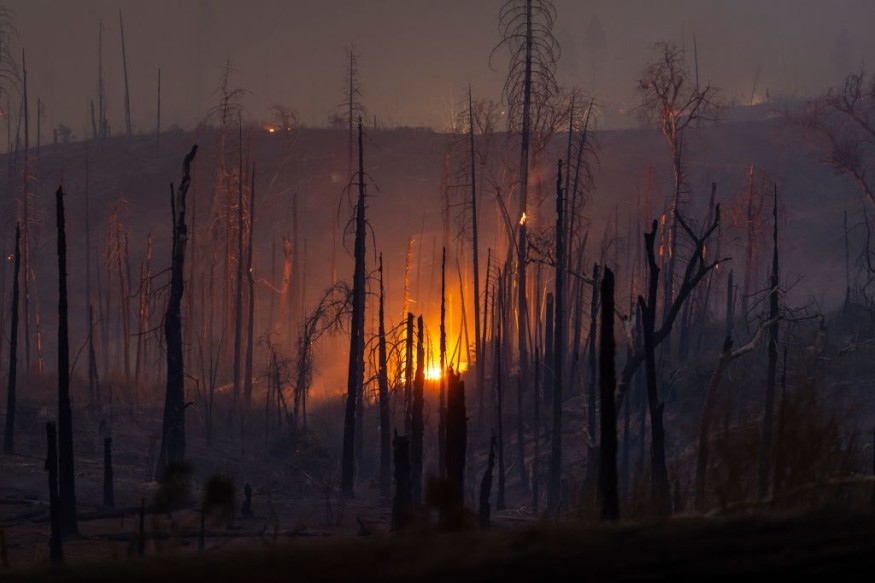Jessie Monroe initially believed the smoke in the field was only from a tiny brush fire. However, all they could do was watch as the Texas grass fire destroyed their homes. The flames then started to spread.
Rapidly Engulfing Everything in Flame

The grass fire quickly damaged or destroyed at least 26 homes in the suburban community near Dallas on Monday due to the high temperatures and wind gusts of up to 20 mph.
The fire started at about 4 o'clock. Sean Davis, the city's fire marshal, claims that the incident occurred in Balch Springs, a suburb of Dallas, as a result of sparks produced when a landscaping team clearing brush in a neighboring dry field struck an object with a mower.
There were no recent reports of injuries, he continued.
Monroe told AccuWeather National Reporter Bill Wadell, "We witnessed home after home simply catch fire." "There is nothing we can do about it."
Mitch Ryan's home was among those burned by the grass fire, but Monroe's had been a safe distance away.
Ryan was at the airport when his home's alarm went off; he is the proprietor of Ryde Executive Limo & Black Car Service. Looking at the security camera footage, I could see the grass fire's flames moving toward his house.
Ryan's family wasn't home when the fire broke out, but a neighbor helped him get his pets out. When Ryan arrived, he had little choice but to watch as the fire consumed his house.
Ryan told Wadell, "Really, all we could do was just watch."
Overall, the house was a complete loss, according to Ryan. In addition to the home's walls and kitchen damage, he believed that around 75 percent of his roof was lost.
However, the family recovered a few items by rummaging among the debris. His wife's wedding garment, which had been meticulously preserved in a closet where the majority of the fire had burnt, remained unharmed, and none of the cabinets carrying essential medications were damaged.
Ryan noted that Monday's fire was not the first to break out in the field and highlighted an earlier instance in which the flames only made it as far as the fence around his house. He claimed that the grass had started extending over the fence this year.
"I'm not saying it would have avoided it, but I believe that if it had been maintained, it would have assisted. If not, none of these properties may have been affected by the fire, Ryan added.
Worsening Situation

Fire analyst Logan Scherschel informed Wadell that some of the busiest fire seasons had occurred during La Niña years due to above-normal temperatures and below-normal precipitation, which have helped fuel up grass and trees.
All of our fuels are essentially prepped for our hot and dry summers because drought first appears in the autumn and then strengthens through the winter and spring, according to Scherschel. That is how the season has progressed.
As the drought worsened during the spring, fuel moisture in central and north Texas became below average, according to Scherschel. Then, from mid-June through July, temperatures rose into the triple digits, and fuels continued to dry up due to a lack of precipitation.
According to the U.S., Dallas County suffered severe to exceptional drought conditions in close to 77% of the county as of late April. Drought Watch. Severe drought (D2) is towards the middle of its six-value scale of drought intensity, which spans from none to extreme drought (D4).
This figure had increased to about 73 percent by mid-July, with 31 percent of the population enduring extreme drought conditions. The county was under severe drought conditions as of July 19. In the county, there were severe to exceptional drought conditions in around 71% of the areas.
The Dallas-Fort Worth International Airport had seen dry weather for 54 straight days since Thursday, July 28. This run matched one from 1955 as the fifth-longest period of dry weather.
The fuel, as well as the meteorological criteria Scherschel takes into account when assessing a fire hazard, have been altered by this warmer, drier weather.
Generally speaking, the criteria are as follows: 90 degrees or higher; 25 percent or less relative humidity; and 15 mph or more winds. According to Scherschel, the other two may have a lower ignition threshold because of the fuel conditions and temperatures in Dallas, which were at or above 100 degrees.
What may have caused such a disaster?
According to Scherschel, Texas' fire season is often ended by long-duration rains brought on by tropical storms or hurricanes that pass across the state towards the end of August and into October. He nevertheless referred to the conclusion of hurricane season as a "wildcard," particularly if the storms travel into Louisiana and farther east.
Scherschel added, "that's when we may experience some of our very severe fire hazard days when we are on the left side of a hurricane or tropical storm." "August is our peak drying window, so our fuels are just getting worse and worse leading up to that point," says the author. "The humidity and wind coming off those storms may generate very intense fire behavior."
For more environmental news, don't forget to follow Nature World News!
© 2025 NatureWorldNews.com All rights reserved. Do not reproduce without permission.





